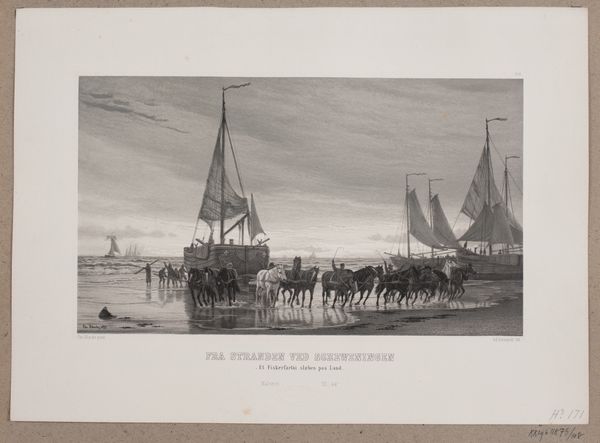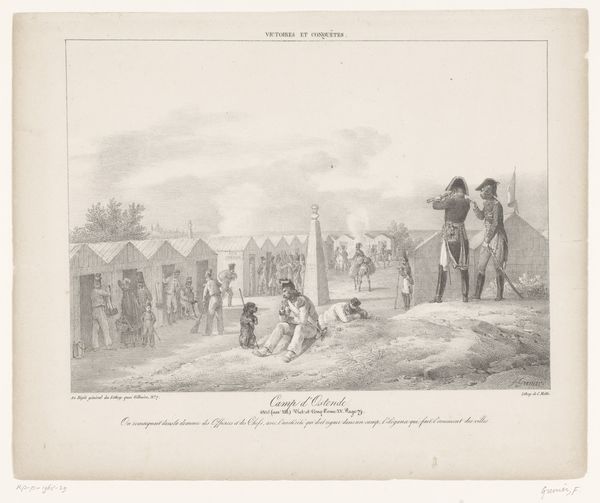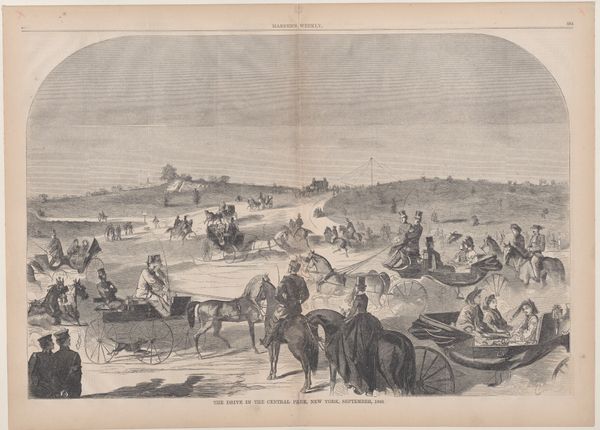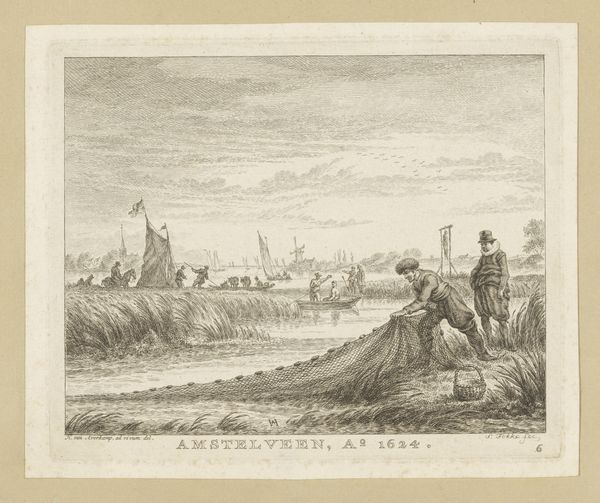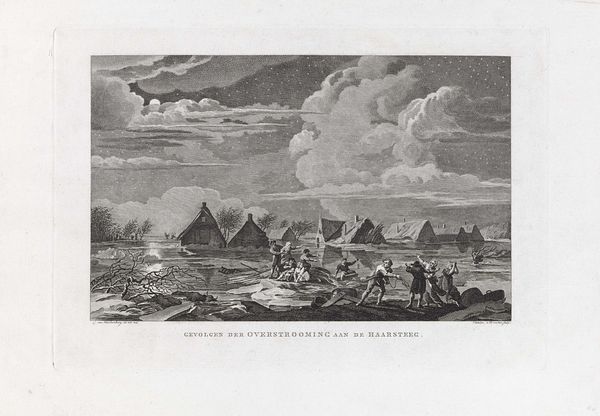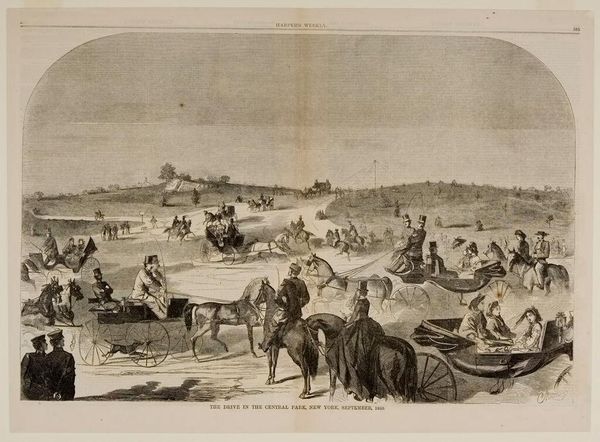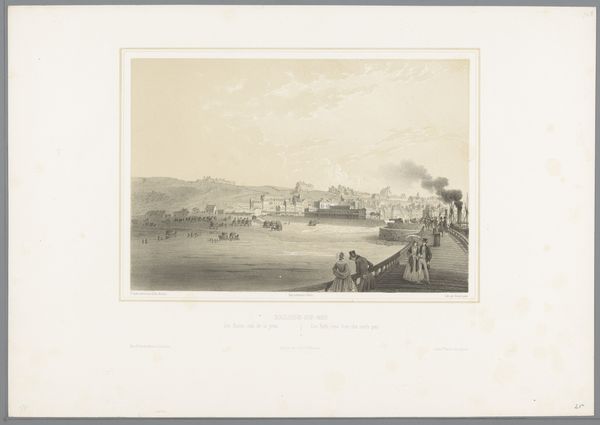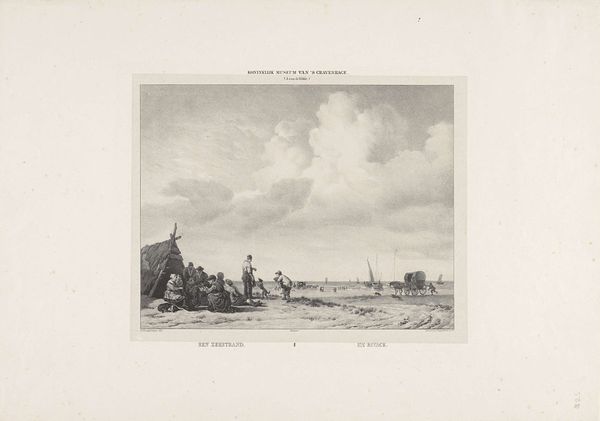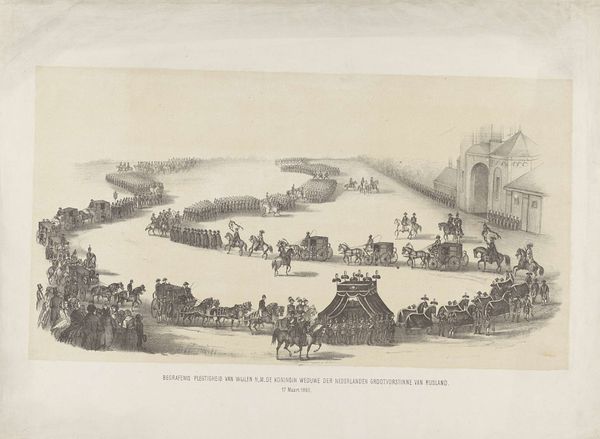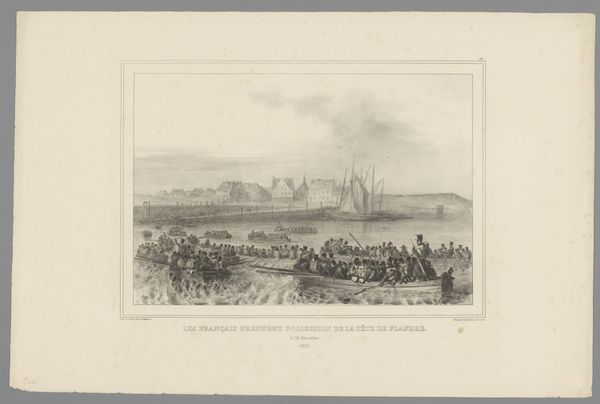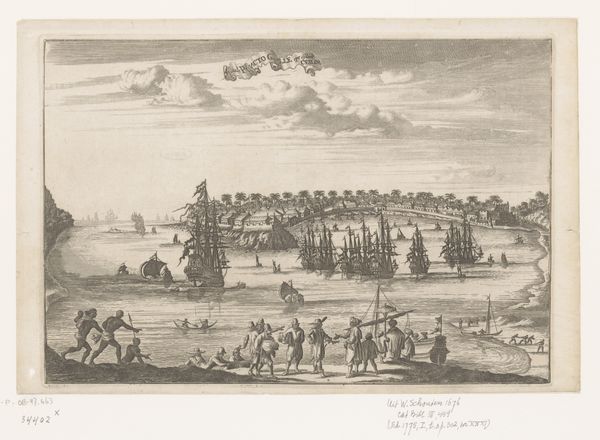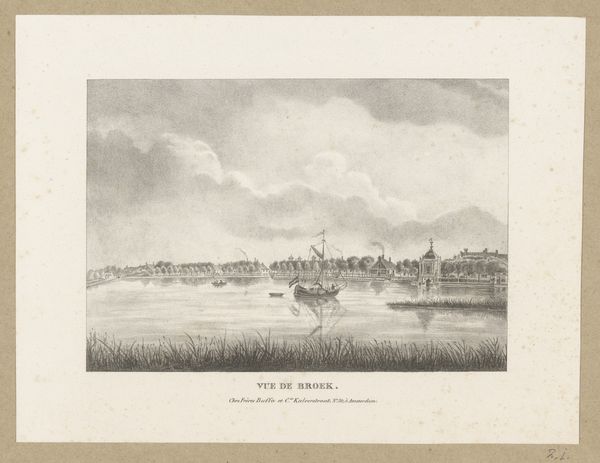
drawing, lithograph, print, etching, pencil
#
drawing
#
lithograph
# print
#
etching
#
landscape
#
pencil drawing
#
pencil
#
realism
Dimensions: height 227 mm, width 295 mm
Copyright: Rijks Museum: Open Domain
Curator: Here we have "The Camp at Millegen in 1860," a pencil drawing, etching, and lithograph print by Gerardus Johannes Bos, currently held at the Rijksmuseum. Editor: It’s remarkably serene for a military encampment! There’s a striking linearity to the rows of tents disappearing into the horizon. It's almost… delicate. Curator: Yes, that sense of tranquility might be surprising. But think about the historical context; large-scale military maneuvers like this were as much about national display as about preparing for actual conflict. It projects an image of ordered strength. How that display influenced social and political dynamics could be questioned. Editor: From a material standpoint, the choice of combining drawing, etching, and lithography is interesting. It's a practical one of reproducibility, right? Multiple impressions could be made for distribution beyond elite circles. Did these reach a wide audience? Curator: Definitely. This kind of imagery played a role in shaping public perception of the military, in a time of shifting political alliances and colonial expansion. These encampments, the print suggests, were important symbolic displays that enforced or renegotiated national identity. Editor: And seeing the figures, civilians mixing amongst soldiers - this visual blending, were there clear class distinctions being made in where it was seen or how it was distributed? It's also telling to see such craftsmanship applied to depicting what is essentially an industrial-military complex, isn’t it? It bridges supposedly high and low cultural spaces. Curator: Absolutely. It raises questions about who Bos was making this for, and what narratives were in place concerning class. What can be missed from these illustrations in contemporary interpretations are narratives surrounding colonialism, the work that went into producing them, and the intended audience, something to consider. Editor: Seeing this today is also a reflection of that cultural impact. It makes me think about how visual representations of military strength, whether through detailed etchings like this one or mass media, are tools of nation-building. Curator: Indeed. The act of recording the camp transforms a temporary military installation into an enduring piece of national visual culture. Editor: Thanks for guiding us through that. The history and the medium come together to suggest such a different perspective on warfare.
Comments
No comments
Be the first to comment and join the conversation on the ultimate creative platform.
